India’s Grains Story
02 Oct 2022 11:00:00
Recently India has imposed a ban on the export of broken rice and imposed a 20% export duty on non- Basmati rice except for parboiled rice. A few months back, India had banned the export of wheat also. India’s steps have raised concerns for many countries. Countries like the USA, Canada and European Union are more concerned about the ban on the export of wheat than rice. Certainly, some nations like Bangladesh, and Nepal are concerned about both grains.
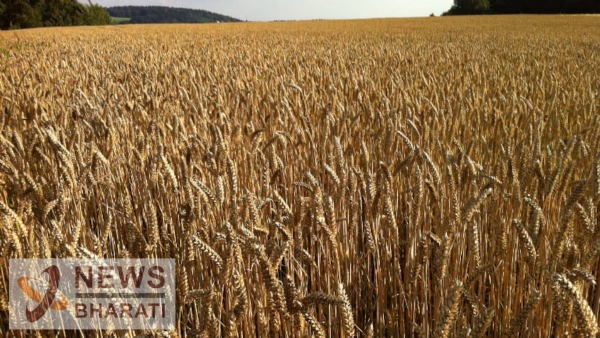
Rice and wheat, both or either of them are a staple food for many countries in the world. As per some IDRC, 2010 report wheat is the staple crop of an estimated 35% of the world population. According to National Geographic’s website, rice is a staple food of 3.5 billion people worldwide. Especially in the case of India, both these grains are supplied at low cost through Public Distribution System (PDS). Also, the National Food Security Act (2014) aimed to provide subsidized food grains to approximately 1.2 billion people.
Also Read: Forest Cover in India: Some facts
Rice and wheat are usually Kharif and Rabi crops respectively. Therefore, mostly after the harvest of paddy i.e., rice by the end of the monsoon, usually wheat is cultivated where two crops agriculture is practised. As per data available on the website of ‘Food and Agriculture Organization of the United Nations’, India ranked second in the production of wheat and rice during the years 2015 to 2020. Following tables show the top 10 wheat producers in the world.

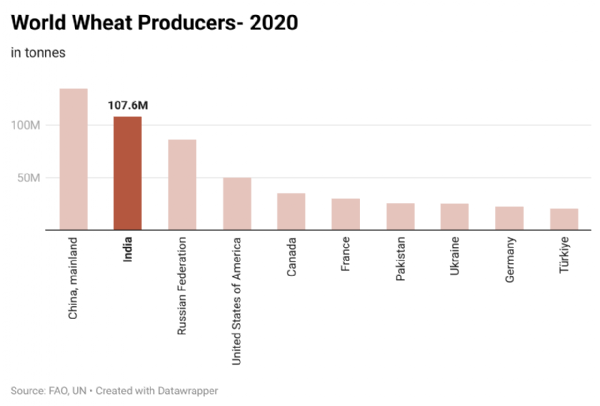
Similar is the case in terms of rice production. Along with India, some South Asian nations share rank in terms of rice production. In the case of both grain crops, China ranks first in rice production. Following charts display production of rice from top 10 rice producing countries
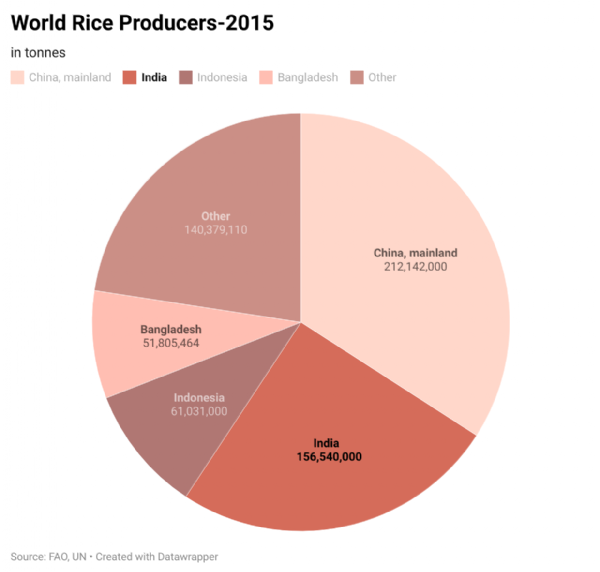
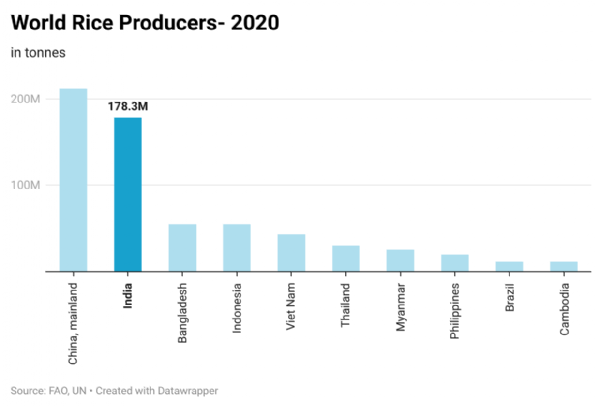
As the data shows, India and China produce large amounts of wheat and rice, but their domestic consumption is very high. India’s domestic wheat consumption has impacted its export. India’s share in the world’s total wheat trade is less than 1%. Russia- Ukraine war affected the overall wheat trade of the world. India’s share in world trade increased during this period. As per Press Information Bureau (PIB) press note published on 31 December 2021, the export of India’s wheat had increased. In April- October (2021-22) the export surpassed over $872 million from $135 million in April- October (2020-21). India’s share in the world’s wheat trade is not even 1%, but as per the same press note, the increase in this share was noted. It was just 0.14% in 2016 which raised to 0.54% in 2020.
Even though the Indian share in the world wheat trade is very less, India can supply to various nations. Out of which top 10 countries are mostly Asian and not European. As per ‘Agricultural Product Exports Development Authority (APEDA)’ in the year 2019-20, the primary buyer for Indian wheat was Nepal and in the next year, the same place was taken by Bangladesh. Majorly, neighbouring countries like Nepal, Bangladesh, and Sri Lanka as well as some middle east countries like Oman, Qatar, UAE and south-east Asian countries like Malaysia and Indonesia. The following two tables based on the data available shows the drastic change in countries in 2019-20 and 2020-21.
_202210012244169930_H@@IGHT_0_W@@IDTH_600.png)
_202210012245341092_H@@IGHT_0_W@@IDTH_600.png)
Along with wheat, India is also the second largest rice producer and hence India. There are two types of rice exports- basmati rice and non-basmati rice. As per some reports, India’s share in Basmati export is nearly 85% of the world Basmati trade. A few days ago, India imposed a 20% duty on all rice varieties except Basmati and parboiled rice. The following two tables show the change of rice export between 2019-20 and 2020-21.
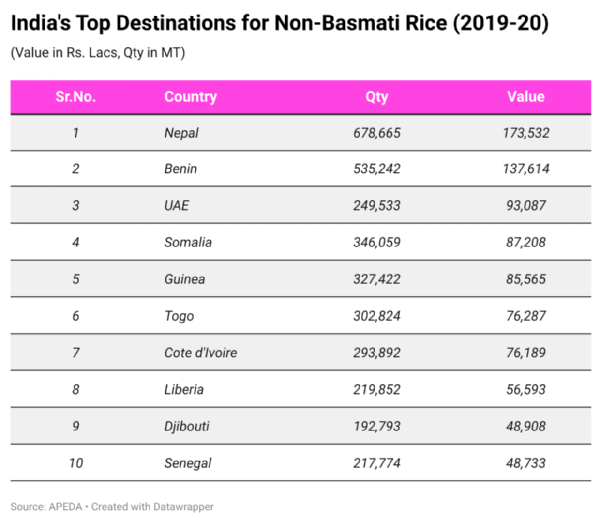
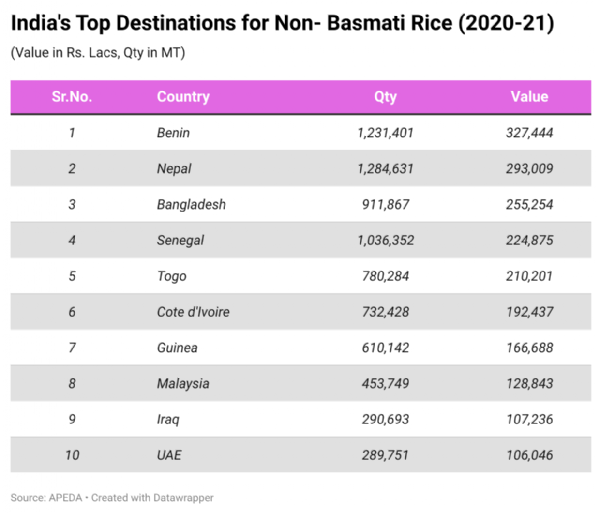
As per some media reports, the price of wheat in the international market has increased since the beginning of the war. India’s restrictions on wheat export have stressed the supply of wheat in the international market; affecting the domestic wheat supply for many western countries. This is causing concerns for may countries. Recently India has successfully defended its position of banning the export of both grains at WTO. Though big countries like the USA, Canada and the EU had warned India about the consequences India had kept its national interest first, and to keep cheques on rising prices of both grains went ahead with its decisions. At the same time, Indian authorities have promised that the situation is being continuously observed.
On the other hand, this year India is experiencing a prolonged monsoon season. According to some news reports, this year, the monsoon had skipped some paddy cultivating regions like Bihar and parts of Uttar Pradesh. Therefore, there was a sharp decline in the area under paddy cultivation. Prolonged monsoon has also reduced the harvesting season. Untimely monsoon showers are concerning for many farmers as harvesters mostly need dry soil to operate. Hence, saving a crop seems to be on priority and very timed activity. The delayed retreat of the monsoon has also affected the window available for the cultivation of Rabi crops like wheat. In the background of the ongoing food crisis and wheat export ban, this is again another bad news for the world. Shortly, the rabi season harvest and the timely retreat of the monsoon would decide the availability of wheat for India’s domestic consumption and also its export policy.
